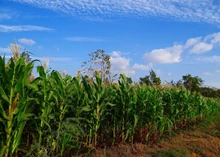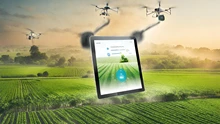
The Food and Agriculture Organization (FAO) and the World Health Organization (WHO) have unveiled reports on microbial hazards in fruits and vegetables, along with measures to control Salmonella in poultry meat. These detailed documents, released as part of the Microbiological Risk Assessment (MRA) series, shed light on potential hazards in various products and offer insights into effective control strategies.
Microbial Hazards in Produce
The joint FAO/WHO Expert Meetings on Microbial Risk Assessment (JEMRA) conducted extensive research from 2021 to 2022, focusing on hazards in fresh, ready-to-eat, and minimally processed fruits and vegetables. The first report delves into primary production, exploring open fields and protected facilities. Context-dependent findings highlight data gaps, particularly in open fields, due to insufficient scientific evidence. Controlled environments, though more manageable, pose risks if not properly supervised, leading to potential cross-contamination.
Addressing Water Disinfection
Data gaps persist concerning the efficacy of water disinfection treatments and post-packaging decontamination interventions. The report emphasises the need to understand these aspects to maintain the microbiological quality of process water and reduce contamination risks.
Challenges in Retail and Food Service
The complexity of produce storage, distribution, and marketing creates data gaps, notably in developing economies. Experts stress the importance of focusing on retail and food service, an often overlooked segment in the supply chain, to enhance education and training on produce safety.
Control Strategies for Broilers
The poultry meat report highlights the complexity of controlling Salmonella in broilers and poultry meat. Experts assert that a combination of control strategies, including vaccine-based approaches and stricter biosecurity measures, proves most effective in reducing Salmonella prevalence in the broiler production chain.
Effectiveness of Interventions
While vaccine-based strategies reduce Salmonella prevalence, they don't eliminate it. Biosecurity measures, sanitation, and hygiene play crucial roles, emphasising the need for Salmonella-free breeding flocks. High-pressure processing and irradiation emerge as valuable interventions, while chlorine-based compounds and organic acids show potential effectiveness.
The report acknowledges incomplete science on virulence factors, and dose-response curves, and lacks coverage on ducks, turkeys, and other species. Issues related to consumer education also remain unaddressed.











